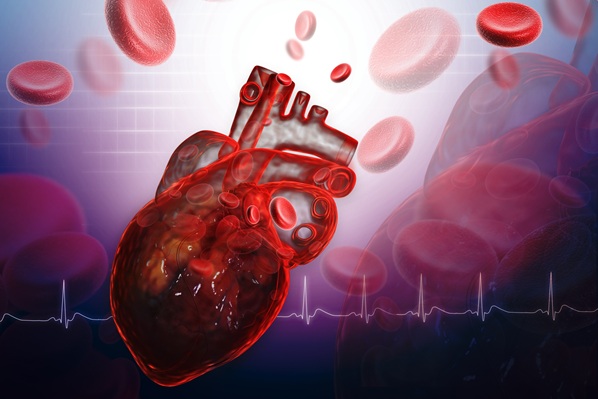Systematic Serological Screening Programme Used for Strongyloidiasis
|
By LabMedica International staff writers Posted on 13 Nov 2019 |

Image: Strongyloides stercoralis adult. The parasitic female lives threaded into the mucosal epithelium of the human small intestine (Photo courtesy of UVM Ecological Parasitology).
Strongyloidiasis is a soil-transmitted helminth infection caused by the nematode Strongyloides stercoralis and is endemic mainly in tropical and subtropical regions, but also in temperate regions.
This round worm infection is widely extended all over the world and it is estimated that at least 370 million individuals are infected worldwide, with a high degree of endemic burden in the tropical zones, especially Southeast Asia, Sub-Saharan Africa, and Latin America. As strongyloidiasis persists for life, it can cause serious morbidity or death long after an immigrant resettles in a new country.
Scientists at the Hospital de la Cruz Roja (Gijón, Spain) and their colleagues performed a prospective screening programme for strongyloidiasis between 2009 and 2014 for all immigrant patients attending the Tropical Medicine Unit. The patients were classified into seven groups according to their geographical area of origin (Central Africa, East Africa, West Africa, North Africa, Mexico and Central America, South America, and South Asia), following the US Centers for Disease Control and Prevention (CDC, Atlanta, GA, USA) criteria.
Three formalin-ether concentrated stool samples and an enzyme-linked immunosorbent assay (ELISA) for anti-S. stercoralis antibodies were used as the screening tools. The qualitative detection of IgG antibodies to S. stercoralis was done using an ELISA (DRG Diagnostics, Marburg, Germany) with microwells coated with Strongyloides antigen. A patient was considered as positive if at least one of the diagnostic tests used for screening (stool samples or/and ELISA) was positive. An eosinophil blood count was performed for all patients. Eosinophilia was defined as >500 eosinophils/mm3.
The team reported that of 659 patients screened, 79 (12%) were positive for S. stercoralis regardless of the diagnostic method used. The prevalence of infection was 42.9% in East African patients, 16.3% in Central African patients, 10.9% in those from South America, and 10% in the case of West Africa. Univariate analysis showed that infection by S. stercoralis was significantly more frequent in patients from Central Africa, and East Africa. Seventy-nine patients had a positive serological test for S. stercoralis; microscopic visualization of larvae of S. stercoralis by formalin-ether concentration of feces was positive for only four of them.
The authors recommended that immigrant patients from developing countries be routinely screened for S. stercoralis, especially those from East Africa. Due to the low sensitivity of stool examination for ova and parasites arising from low larval burden and intermittent shedding in the stool, serological testing is the diagnostic method of choice for screening in immigrant populations. The study was published in the November, 2019 issue of the International Journal of Infectious Diseases.
Related Links:
Hospital de la Cruz Roja
US Centers for Disease Control and Prevention
DRG Diagnostics
This round worm infection is widely extended all over the world and it is estimated that at least 370 million individuals are infected worldwide, with a high degree of endemic burden in the tropical zones, especially Southeast Asia, Sub-Saharan Africa, and Latin America. As strongyloidiasis persists for life, it can cause serious morbidity or death long after an immigrant resettles in a new country.
Scientists at the Hospital de la Cruz Roja (Gijón, Spain) and their colleagues performed a prospective screening programme for strongyloidiasis between 2009 and 2014 for all immigrant patients attending the Tropical Medicine Unit. The patients were classified into seven groups according to their geographical area of origin (Central Africa, East Africa, West Africa, North Africa, Mexico and Central America, South America, and South Asia), following the US Centers for Disease Control and Prevention (CDC, Atlanta, GA, USA) criteria.
Three formalin-ether concentrated stool samples and an enzyme-linked immunosorbent assay (ELISA) for anti-S. stercoralis antibodies were used as the screening tools. The qualitative detection of IgG antibodies to S. stercoralis was done using an ELISA (DRG Diagnostics, Marburg, Germany) with microwells coated with Strongyloides antigen. A patient was considered as positive if at least one of the diagnostic tests used for screening (stool samples or/and ELISA) was positive. An eosinophil blood count was performed for all patients. Eosinophilia was defined as >500 eosinophils/mm3.
The team reported that of 659 patients screened, 79 (12%) were positive for S. stercoralis regardless of the diagnostic method used. The prevalence of infection was 42.9% in East African patients, 16.3% in Central African patients, 10.9% in those from South America, and 10% in the case of West Africa. Univariate analysis showed that infection by S. stercoralis was significantly more frequent in patients from Central Africa, and East Africa. Seventy-nine patients had a positive serological test for S. stercoralis; microscopic visualization of larvae of S. stercoralis by formalin-ether concentration of feces was positive for only four of them.
The authors recommended that immigrant patients from developing countries be routinely screened for S. stercoralis, especially those from East Africa. Due to the low sensitivity of stool examination for ova and parasites arising from low larval burden and intermittent shedding in the stool, serological testing is the diagnostic method of choice for screening in immigrant populations. The study was published in the November, 2019 issue of the International Journal of Infectious Diseases.
Related Links:
Hospital de la Cruz Roja
US Centers for Disease Control and Prevention
DRG Diagnostics
Latest Immunology News
- Chip Captures Cancer Cells from Blood to Help Select Right Breast Cancer Treatment
- Blood-Based Liquid Biopsy Model Analyzes Immunotherapy Effectiveness
- Signature Genes Predict T-Cell Expansion in Cancer Immunotherapy
- Molecular Microscope Diagnostic System Assesses Lung Transplant Rejection
- Blood Test Tracks Treatment Resistance in High-Grade Serous Ovarian Cancer
- Luminescent Probe Measures Immune Cell Activity in Real Time
- Blood-Based Immune Cell Signatures Could Guide Treatment Decisions for Critically Ill Patients
- Novel Tool Predicts Most Effective Multiple Sclerosis Medication for Patients
- Companion Diagnostic Test for CRC Patients Identifies Eligible Treatment Population
- Novel Tool Uses Deep Learning for Precision Cancer Therapy
- Companion Diagnostic Test Identifies HER2-Ultralow Breast Cancer and Biliary Tract Cancer Patients
- Novel Multiplex Assay Supports Diagnosis of Autoimmune Vasculitis
- Blood Test Predicts Immunotherapy Efficacy in Triple-Negative Breast Cancer
- Simple Genetic Testing Could Predict Treatment Success in Multiple Sclerosis Patients
- Novel Gene Signature Predicts Immunotherapy Response in Advanced Kidney Cancers
- New Technology Deciphers Immune Cell Communication to Predict Immunotherapy Response
Channels
Clinical Chemistry
view channel
VOCs Show Promise for Early Multi-Cancer Detection
Early cancer detection is critical to improving survival rates, but most current screening methods focus on individual cancer types and often involve invasive procedures. This makes it difficult to identify... Read more
Portable Raman Spectroscopy Offers Cost-Effective Kidney Disease Diagnosis at POC
Kidney disease is typically diagnosed through blood or urine tests, often when patients present with symptoms such as blood in urine, shortness of breath, or weight loss. While these tests are common,... Read moreMolecular Diagnostics
view channel
New Biomarker Panel to Improve Heart Failure Diagnosis in Women
Heart failure affects millions worldwide, yet many women are still misdiagnosed or diagnosed too late. Although heart failure broadly means the heart cannot pump enough blood to the body’s cells, its two... Read more
Dual Blood Biomarkers Improve ALS Diagnostic Accuracy
Diagnosing amyotrophic lateral sclerosis (ALS) remains difficult even with advanced imaging and genetic tools, especially when clinicians must distinguish it from other neurodegenerative conditions that... Read moreHematology
view channel
ADLM’s New Coagulation Testing Guidance to Improve Care for Patients on Blood Thinners
Direct oral anticoagulants (DOACs) are one of the most common types of blood thinners. Patients take them to prevent a host of complications that could arise from blood clotting, including stroke, deep... Read more
Viscoelastic Testing Could Improve Treatment of Maternal Hemorrhage
Postpartum hemorrhage, severe bleeding after childbirth, remains one of the leading causes of maternal mortality worldwide, yet many of these deaths are preventable. Standard care can be hindered by delays... Read more
Pioneering Model Measures Radiation Exposure in Blood for Precise Cancer Treatments
Scientists have long focused on protecting organs near tumors during radiotherapy, but blood — a vital, circulating tissue — has largely been excluded from dose calculations. Each blood cell passing through... Read moreMicrobiology
view channel
15-Minute Blood Test Diagnoses Life-Threatening Infections in Children
Distinguishing minor childhood illnesses from potentially life-threatening infections such as sepsis or meningitis remains a major challenge in emergency care. Traditional tests can take hours, leaving... Read more
High-Throughput Enteric Panels Detect Multiple GI Bacterial Infections from Single Stool Swab Sample
Gastrointestinal (GI) infections are among the most common causes of illness worldwide, leading to over 1.7 million deaths annually and placing a heavy burden on healthcare systems. Conventional diagnostic... Read morePathology
view channel
AI Tool Improves Accuracy of Skin Cancer Detection
Diagnosing melanoma accurately in people with darker skin remains a longstanding challenge. Many existing artificial intelligence (AI) tools detect skin cancer more reliably in lighter skin tones, often... Read more
Highly Sensitive Imaging Technique Detects Myelin Damage
Damage to myelin—the insulating layer that helps brain cells function efficiently—is a hallmark of many neurodegenerative diseases, age-related decline, and traumatic injuries. However, studying this damage... Read moreTechnology
view channel
AI Model Achieves Breakthrough Accuracy in Ovarian Cancer Detection
Early diagnosis of ovarian cancer remains one of the toughest challenges in women’s health. Traditional tools such as the Risk of Ovarian Malignancy Algorithm (ROMA) can struggle to distinguish between... Read more
Portable Biosensor Diagnoses Psychiatric Disorders Using Saliva Samples
Early diagnosis of psychiatric disorders such as depression, schizophrenia, and bipolar disorder remains one of medicine’s most pressing challenges. Current diagnostic methods rely heavily on clinical... Read more
Cell-Sorting Device Uses Electromagnetic Levitation to Precisely Direct Cell Movement
Sorting different cell types—such as cancerous versus healthy or live versus dead cells—is a critical task in biology and medicine. However, conventional methods often require labeling, chemical exposure,... Read moreIndustry
view channel
Co-Diagnostics Forms New Business Unit to Develop AI-Powered Diagnostics
Co-Diagnostics, Inc. (Salt Lake City, UT, USA) has formed a new artificial intelligence (AI) business unit to integrate the company's existing and planned AI applications into its Co-Dx Primer Ai platform.... Read more























